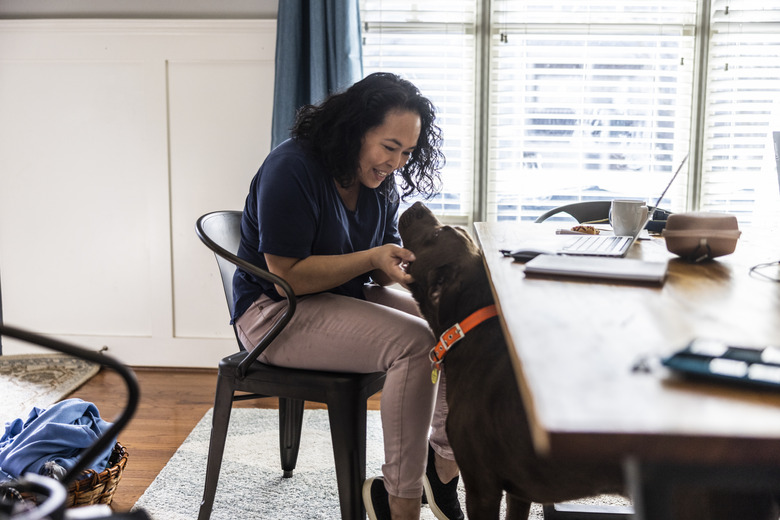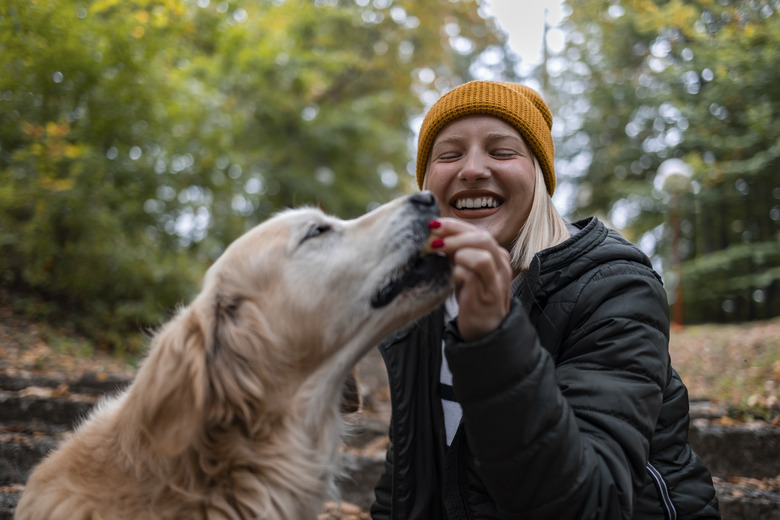Signs Of An Abused Dog
Just as humans suffer mental and emotional effects from abuse, so do dogs. Even after cuts, bruises, and broken bones have healed, the psychological suffering can continue. There are some common signs of an abused dog, some of which may seem subtle, while others are more obvious.
Signs of an abused dog
Signs of an abused dog
Listed below are some common effects of physical abuse. Keep in mind that there can also be other reasons for these signs, and that these behaviors and physical signs do not necessarily indicate current abuse, but could be the result of trauma in years past (if they indicate trauma at all).
Hiding or submission
Some dogs who have been abused become fearful of humans and will hide more often. Dogs might also behave more submissively around humans, such as cowering, flinching, or shying away from a hand. They may also be less playful and more submissive with other dogs. You might see them urinating or defecating out of fear. Their tail may stay tucked, or they may roll onto their back a lot.
Food aggression
Some dogs who have been abused, neglected, or kept in a hoarding situation might not have been properly fed and/or they may have experienced someone taking food away from them. This can sometimes result in a dog being more possessive around food bowls.
Separation anxiety
A dog with a history of abuse might become very attached with a new owner with whom they feel secure. Consequently, when the person is gone, such as for work, the dog's anxiety might increase. This can cause them to chew up or destroy things, like furniture, shoes, and doors.
Aggressive behavior
Instead of becoming passive, some abused dogs might become aggressive. Like abused dogs who become passive, an aggressive abused dog has a fear of people. This can cause them to snap or attack without provocation. They can be aggressive to other animals as well.
Physical signs of abuse
An abused dog may have old or new signs of physical abuse. These dogs may have a lot of scars, such as around the face if they've been used in dog fights. They could also have injuries that aren't being treated, such as an obviously fractured leg, an open wound, limping for an extended period of time, or an embedded dog collar. Dogs who are neglected (which is also a form of abuse) may also be very skinny or have extreme skin issues due to flea infestations, ticks, or other reasons.
Types of dog abuse
Types of dog abuse
Some types of abuse are more obvious than others, but all of the following activities are considered abusive:
- Physically punishing a dog by hitting or beating them.
- Physically restraining a dog with a short rope or a kennel that's too small.
- Verbally punishing a dog by yelling at them.
- Overpressuring a dog to perform a task or pushing them past their capabilities.
- Rejecting a dog's need for affection and attention.
- Socially isolating a dog from humans and other animals, including animals living outside for long periods of time.
- Neglecting a dog or failing to provide proper care, feeding, grooming, and shelter (especially in bad weather).
- Terrorizing or otherwise deliberately inflicting pain or stress onto a dog.
Effects of animal cruelty
Effects of animal cruelty
There are obvious physical effects of abuse, including wounds, broken bones, and physical inactivity due to pain or depression. Most animal cruelty laws only tackle the immediate physical harm that abused animals suffer because it's hard to see or measure the emotional and mental repercussions.
But while physical effects are sometimes relatively short-term issues, resulting mental effects can cause higher degrees of pain and suffering, with the damage lasting a lot longer.
How to report dog abuse
How to report dog abuse
If you suspect a dog is being abused or neglected, contact your local animal control, humane society, or police. You can also call your veterinarian if you're unsure of whom to call regarding animal welfare issues in your area. If you witness abuse in progress, call 911.
Rehabilitating an abused dog
Rehabilitating an abused dog
If you've rescued an abused dog from an animal shelter and want to rehabilitate them, it won't happen immediately. The process can take years, and the dog may never fully recover. However, it can be rewarding to make even a little bit of difference in your dog's behavior, mental health, and happiness.
- Let the dog get used to you and other family members at their own pace without pressure or force. Sometimes, this just means sitting in the same room with them and strategically offering treats now and then.
- Show them that they are loved without overwhelming them.
- Feed and care for them properly and provide regular exercise.
- Clearly communicate with them in a soft voice.
- Find a qualified, certified trainer if your dog has behavioral or socialization issues. You might also need to consult a veterinary behaviorist.
- Build your dog's confidence through small outings or situations that you know will end well.
- Give them a safe place to which they can retreat and have plenty of toys to keep them busy when alone. You can also get things like a calming dog-pheromone diffuser that plugs into outlets around your home. A ThunderShirt can also help a dog feel less anxious when they're left alone. The compression provides comfort, much like a weighted blanket does for people.
The bottom line
The bottom line
There are some common signs of animal abuse, ranging from hiding to aggression to physical wounds. These signs in companion animals don't automatically mean they have been abused and can be indicators of other issues. If you adopt a dog who has signs of abuse, it can take a while for them to acclimate to you and their new home, or it's possible they'll feel safe with you and become quite attached. This might result in separation anxiety when you're away from home, even just for errands or work. If you're concerned about a dog's welfare or see signs of neglect, contact animal control, a humane society, or local law enforcement.


